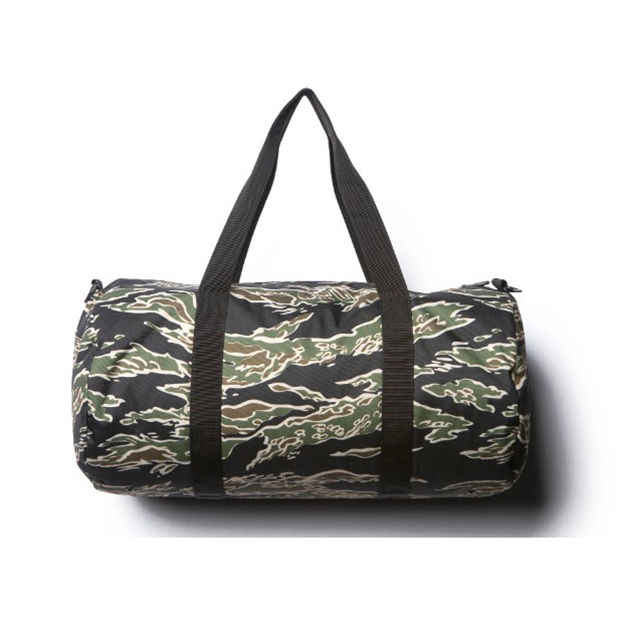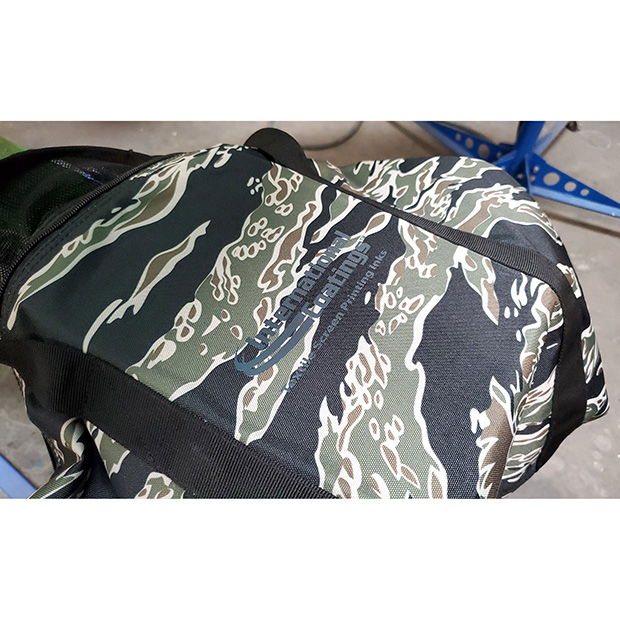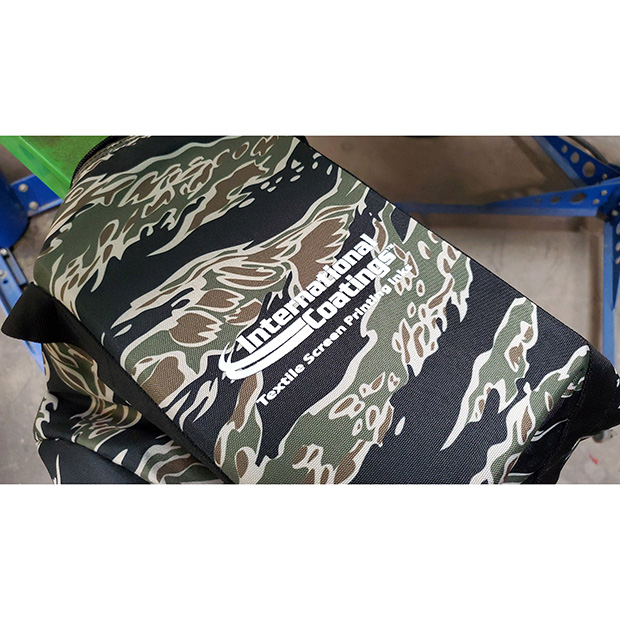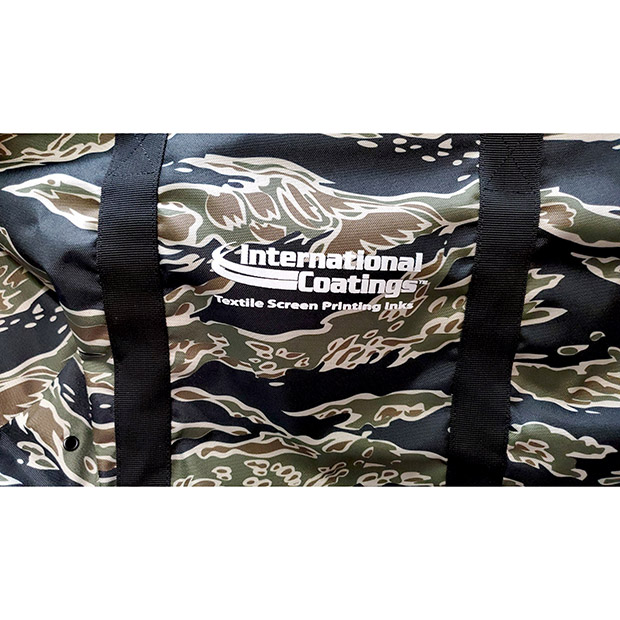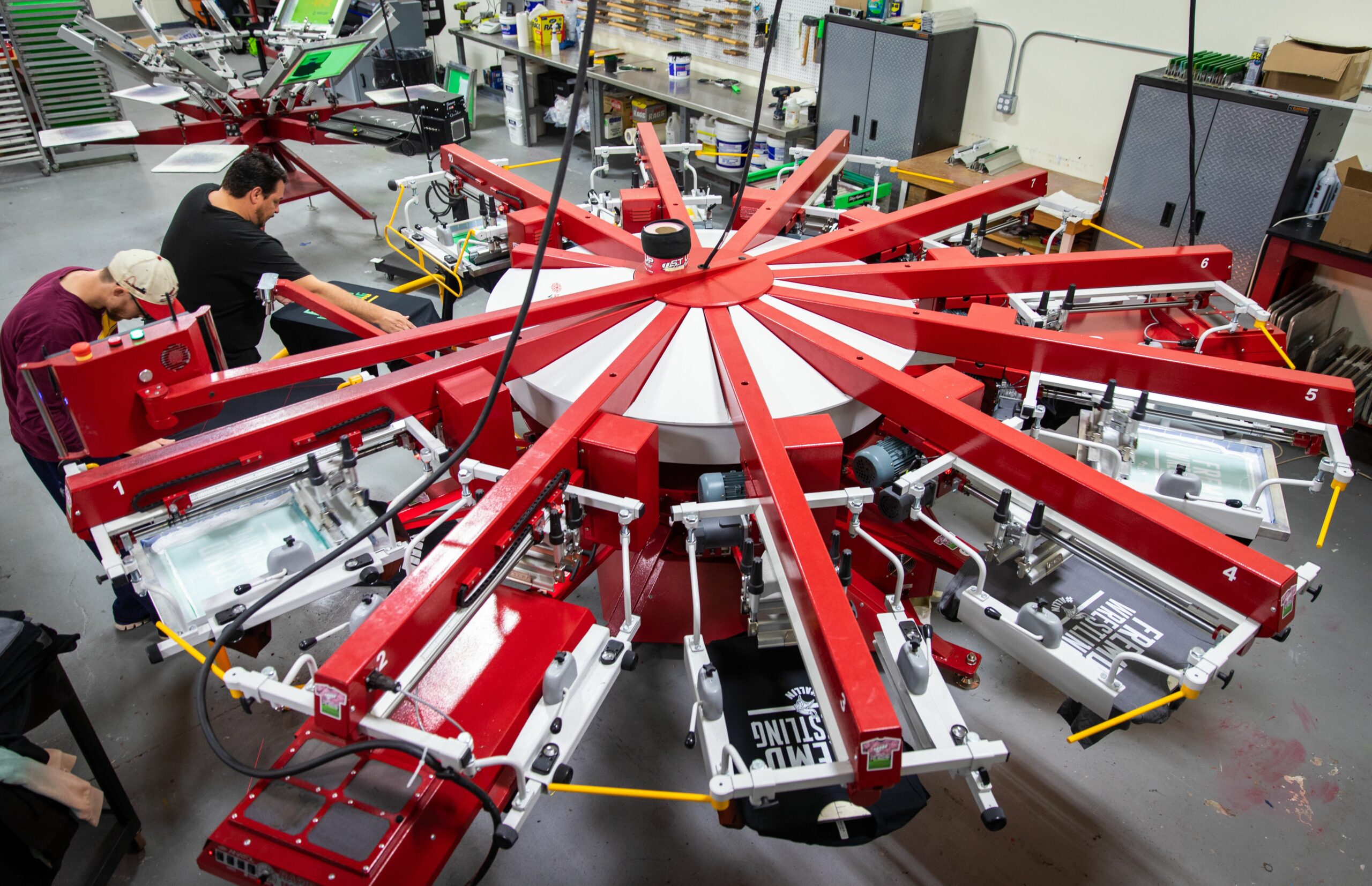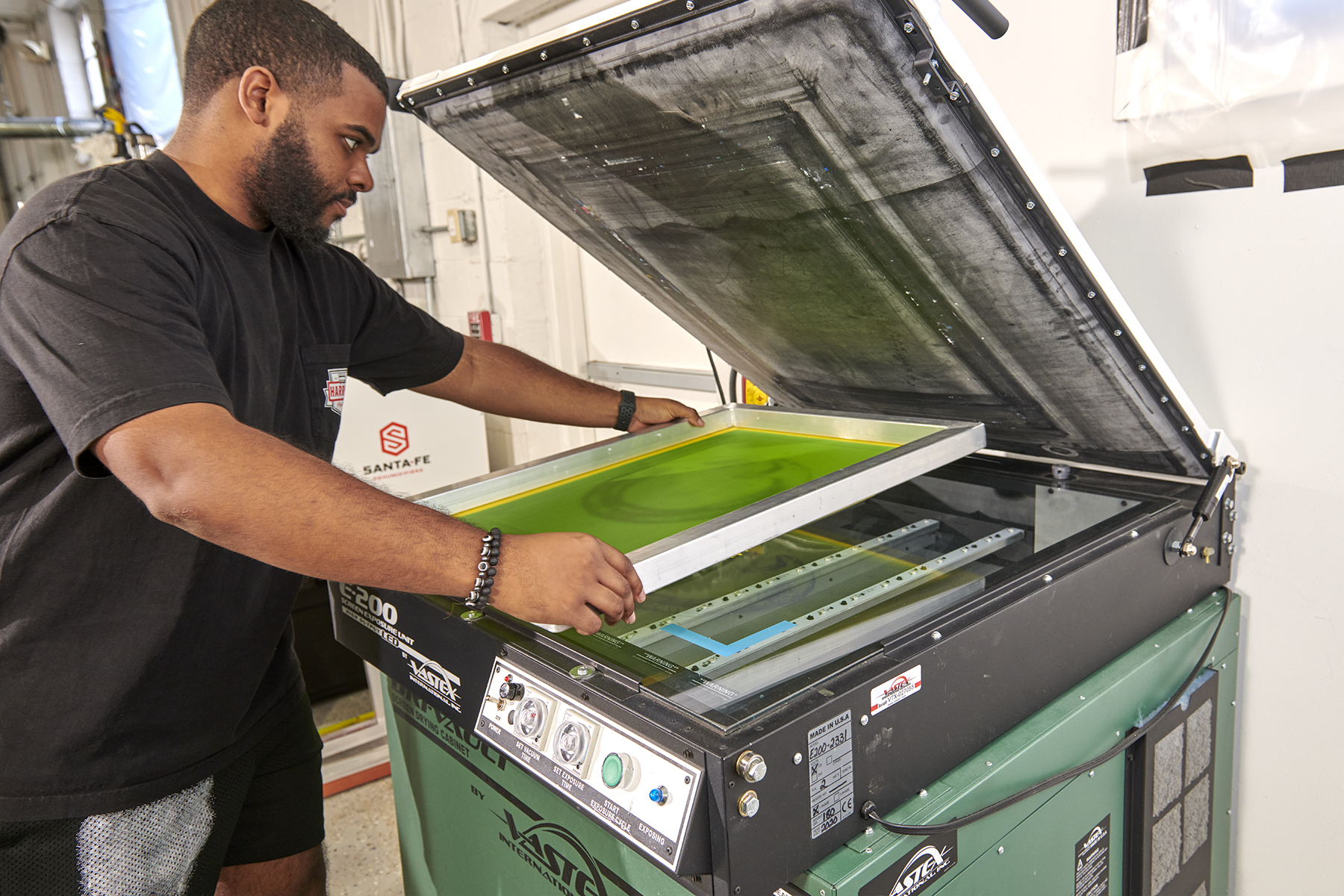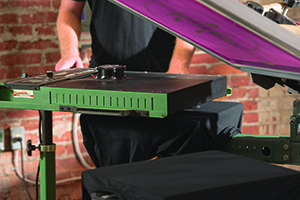January 12, 2021
Manufacturers of athletic wear and accessories have an ever-widening variety of fabrics to choose from. Just as consumers demand more colorful, more durable materials, fabrics have evolved to meet those demands. However, with the newer synthetic fabrics, screen printers also have had to adapt their techniques and materials to print logos or other decoration on them.
Recently, I was faced with a double challenge—how to print on sublimated 100% polyester bags that had nylon straps prone to shrinking when heated over 260°F (127°C). The bags sported a zipper that potentially could be damaged if exposed to high heat.
We first assessed the bags and found that they are sturdy, well made and were printed with fun and colorful patterns. So how can we create a durable print on these bags while mitigating dye migration and shrinkage? Here are some tips and tricks:
• It’s important that the pallet fits the item you are printing. What I mean is, on this particular print job for example, to make sure not to expose parts of the bag that were more heat sensitive, I created a custom pallet large enough to print the design, yet small enough to allow for the zipper and the straps to hang off the pallet. This allowed for those parts to be a bit less exposed to direct heat during flashing.
• Use a strong low-curing bleed blocker, in our case we used a dark gray bleed blocking ink, and mix in about 5% of catalyst. The catalyst helps to bond the ink to the slick polyester substrate and create a durable print when cured at lower temperatures.
• Flashing tips – adjust for greater distance between the heat source and the substrate to allow less heat to strike the fabric. If possible, tuck any straps under the fabric prior to flashing, to avoid excessive heat exposure.
• Next, use a low-cure ink to overprint the design; we used a poly white ink.
• In preparation for the curing step, tuck the straps into the bag, again to prevent excessive exposure to heat.
• Set the dryer to a low 255°F (124°C) and run the bag through the dryer for a minute.
Be sure to test the durability of the print prior to doing a production run. Let the print completely cure for 24 hours or at least overnight before conducting a simple scratch test to assure that the ink won’t scratch or flake off.
Kieth Stevens is the Western regional sales manager for International Coatings. He has been screen printing for more than 42 years and teaching screen printing for more than 12 years, is a regular contributor to International Coatings’ blogs and won SGIA’s 2014 Golden Image Award. He can be reached at kstevens@iccink.com. For more information, visit iccink.com and read the company’s blog at internationalcoatingsblog.com.
March 20, 2024 | Production
As with pretty much any business, one of the keys for apparel and T-shirt decorators running a successful custom screen-printing shop is having the right equipment, first and foremost, the right press, or presses.
FULL STORY
March 15, 2024 | Production
As is the case with flash units and dryers, screen exposure units, computer-to-screen-systems and washout booths are critical to successful screen printing of T-shirts and other apparel
FULL STORY
January 16, 2024 | Production
Go to any industry trade show or visit an actual custom apparel screen-printing shop, and your eyes will naturally be drawn to the press, or presses there. This is true whether the shop in question employs a single manual press or is running multiple autos.
FULL STORY

